
"A Study in Reds, that women's club film of a sovietized America, has been successfully completed and the club, a very pillar of society in its community, has been made safe, by the experiment, for Democracy. The Five Year Plan called for the production of ten eggs a day, so that there was none left for the onetime owner of the chickens; children seemed to get mixed on their return from the communistic nursery; and the police ate all the tidbits from the workers' lunches, so that in the end the good ladies of the club returned contentedly to the stultifying, but more reassuring, banalities of private ownership. Miriam Bennet, ACL, of Wisconsin Dells, was the director and cameraman of this reversal of the customary Sovkino drama" Movie Makers, Aug. 1932, 361.
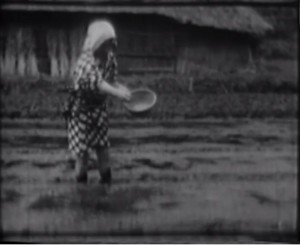
"Documentary: On the life of rural rice farm families in Japan." National Archives.
"Okamoto's heroine was a Japanese girl making a doll as a birthday present for a friend. Pictorial values, backgrounds of the Japanese countryside in spring, and the delicate grain which Cinematographer Okamoto had achieved gave his film distinction." American Cinematographer, Feb. 1935, 78.
"'Tender Friendship,' in 150 feet of 8mm film, was sensational from the photographic standpoint. Its sheer beauty, its poetic rhythm both in story and photography, made it one of the outstanding pictures of the contest" American Cinematographer, Dec. 1934, 365.
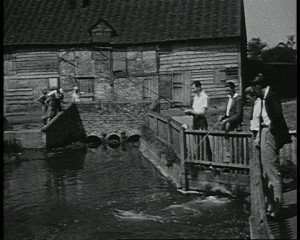
"Amersham and the surrounding countryside in different seasons." (EAFA database)

‘Camera pans over cottages in the village of Tolleshunt D’Arcy. Paintings of the coronation are shown followed by a photo of Queen Elizabeth II. A shot of the church with two old men sitting on a bench by the road. Another shot of the church followed by a sign post for the village and the Union Jack flag flying. A man goes into a telephone box in the middle of the village as a bus drives past. Flags and bunting decorate the village. Two women come out of a shop. One woman gets onto a bike and the other walks away. There is a shot of Tolleshunt D’Arcy Post Office and the postmistress, Miss Blaxhall, comes out under the filmmaker Joyce Allingham's direction. The baker puts up coronation decorations outside his shop and people put decorations on string around the village. A little girl waves a Union Jack flag. Close up of a girl and boy decorating pots using red, white and blue ribbon. Shots of people decorating their gardens. Two people come out of a Co-operative store and a little girl walks down the street carrying a basket. Mr and Mrs Emeny come out of the Thatcher’s Arms and another couple walk out of the front door of their cottage and smile at the camera. A woman wraps red, white and blue ribbon around her bird table and another woman carries a crown on a pillow. Camera pans across the street to show the villagers decorating. Children play in the street and a father lifts his little girl up to the camera and they both wave. People stand in a group and look at the camera. Miss Jessie Bacon looks through the window of Salter Lodge. Shot of the decorated D’Arcy Motors garage. The owner stands outside the garage where the Castrol oil and Esso petrol is sold. The proprietor, his wife and dog stand outside the Red Lion pub. Joyce’s sister, Margaret Allingham, and Margaret's husband, Philip Youngman Carter, stand outside their home in the main street. They then pose by the front door of D’Arcy House. Shot of a dog sitting in the garden. Close up of a woman hanging her washing on the line. Various shots of villagers going to church. A woman and her two children stand outside their home looking at the camera. A man climbs up a ladder to put up some bunting. Various villagers pose for the camera outside their homes and shops. One man cuts a rose and smells it. A car drives along the road followed by a shot of people coming out of a village shop. Shot of people looking out of the windows of the Queens Head pub and standing outside the tobacconist shop. Various shots of villagers standing outside shops and houses. A poster introducing the Tolleshunt D’Arcy Coronation Celebrations, June 2nd 1953 at the grounds of D’Arcy House. The poster states that there is a television in the village by Radio Vision, Maldon. It gives the line up of events for the day: Parade meet at The Maypole at 1.40pm followed by 3.45pm Sports; 4:30pm Sit Down Tea For Children; 5.00pm Running Buffet For Everyone; 5.40pm Sports Continued; 7.15pm Presentation of Prizes; 8.30pm Dancing in The Village. The procession of decorated lorries, vans, prams, cycles and fancy dress is shown. Camera pans over the people in the crowd dressed up in costumes. Close ups of the carnival floats driving past the camera. Children participate in various relay races. The film ends with scenes of a pram race with men dressed as women and the adult 'babies' drinking pints of beer’ (EAFA).
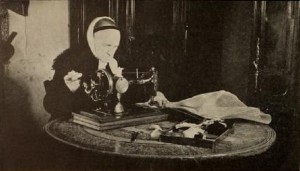
"Luc Fauvel is a Norman, and he turned to his own pays to contrive as sensitive and trenchant a study of French provincial life, in miniature, done by the medium of film, as did giants like Flaubert and de Maupassant through the medium of words. His Vieille France has irony, pathos, humor and plain reporting. It is the tale of an old bonnet maker of Normandy, who goes through her daily tasks, in which she has grown old, but who, at the end of the labor, reviews the past, by means of her photograph album, and meditates on her son, who died on the field of honor in the World War, and on her daughter who has become a great dancer and is far removed from the little Norman village of her origin. Mr. Fauvel accomplishes most by suggestion, by indirect statement and by a kind of insidious comment on life, never more than fleetingly presented. This young Frenchman, now studying at Cambridge, in England, will give us better and more technically well knit pictures as times goes on." Movie Makers, Dec. 1937, 630.
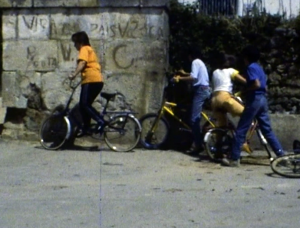
Documental corto sobre el pueblo de Villa de Corres. El filme comienza con varios paisajes de los alrededores y planos de montañas y el río. A continuación se muestra el pueblo, aparecen casas, el río, calles y algunas partes características como el Castillo, el hospital, la iglesia de San Esteban, el bebedero, la fuente , la plaza, etc. También aparecen algunas personas mayores y niños por las calles. Se comenta que es un pueblo con una población de 30 habitantes pero que es uno de los pueblos más longevos de la provincia de Álava.
Short documentary about a town called Villa de Corres. The film begins with several landscapes of the surroundings and shots of the mountains and the river. Then the film shows the town, houses, the river, streets, and some landmarks like the Castle, the hospital, the San Esteban church, the drink fountain, the fountain, the square, etc. Some older persons and children are also seen. It is said that the town only has a population of 30 persons, but that it is one of the longest-living towns in the Alava province.
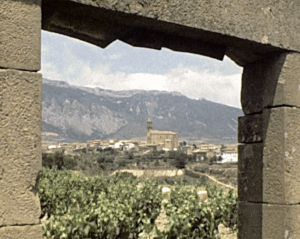
Una película que invita a hacer un viaje por la Rioja Alavesa, en especial por el pueblo de El Villar. Un recorrido que muestra los edificios, los paisajes naturales y su
gente.
A film that invites to make a trip through the Rioja Alavesa region, specially through the El Villar town. A journey that depicts buildings, natural landscapes and the people of the region.
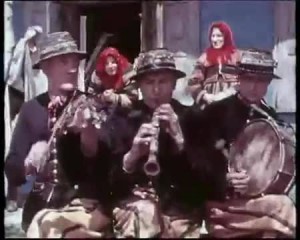
A short excerpt of the film survives, showing a wedding celebration in Złaków Borowy, Poland. The film also circulated with the title, "Une Noce a la Campagne."
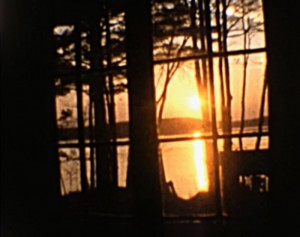
Film treatment of the poem "When the Frost Is On the Punkin" by James Whitcomb Riley. Intertitles with text from the poem are interspersed among images that match the themes and content of the poem. The scenes include shots of harvest work, fall scenery, turkeys, and pumpkins.
Total Pages: 4